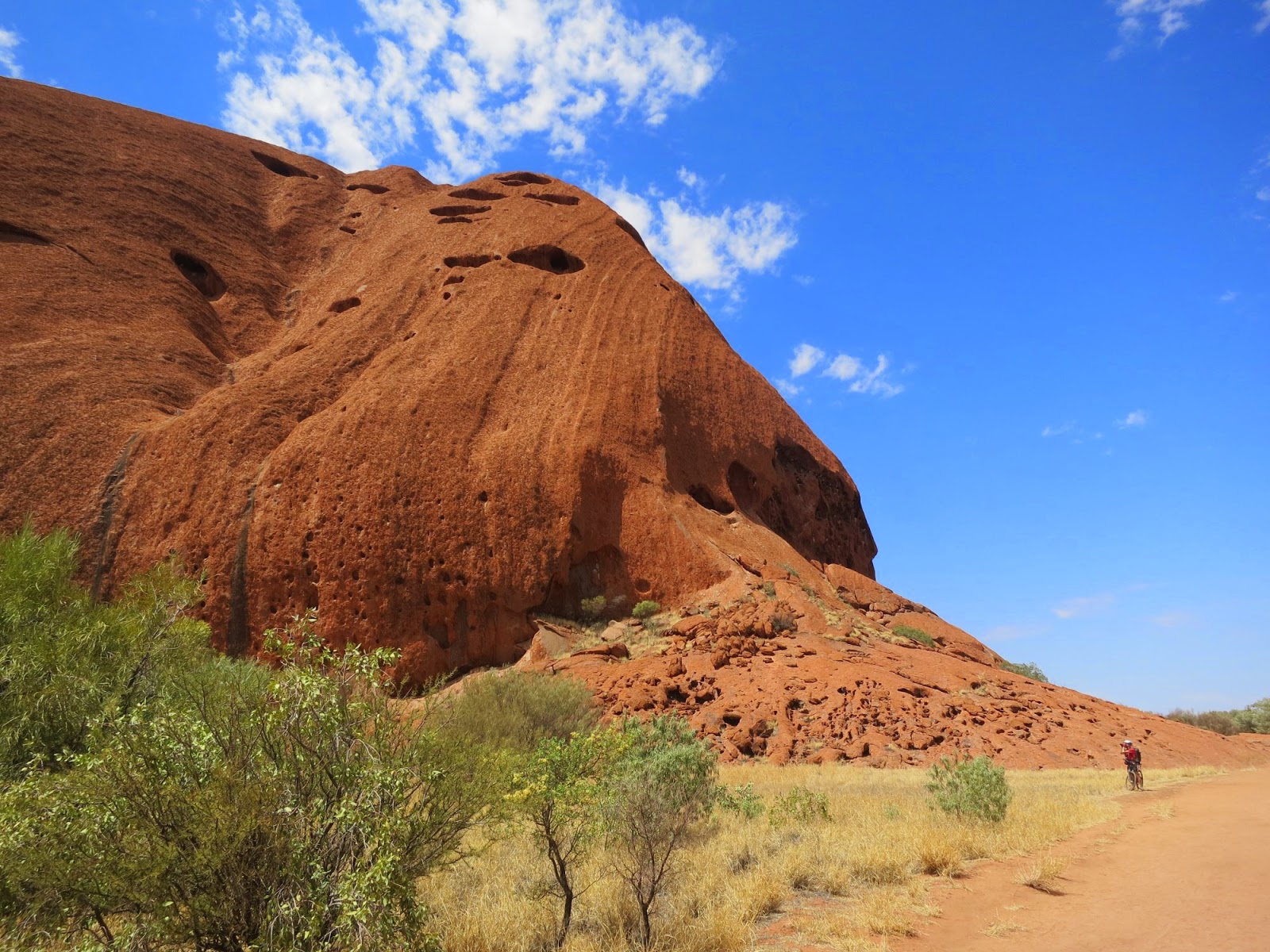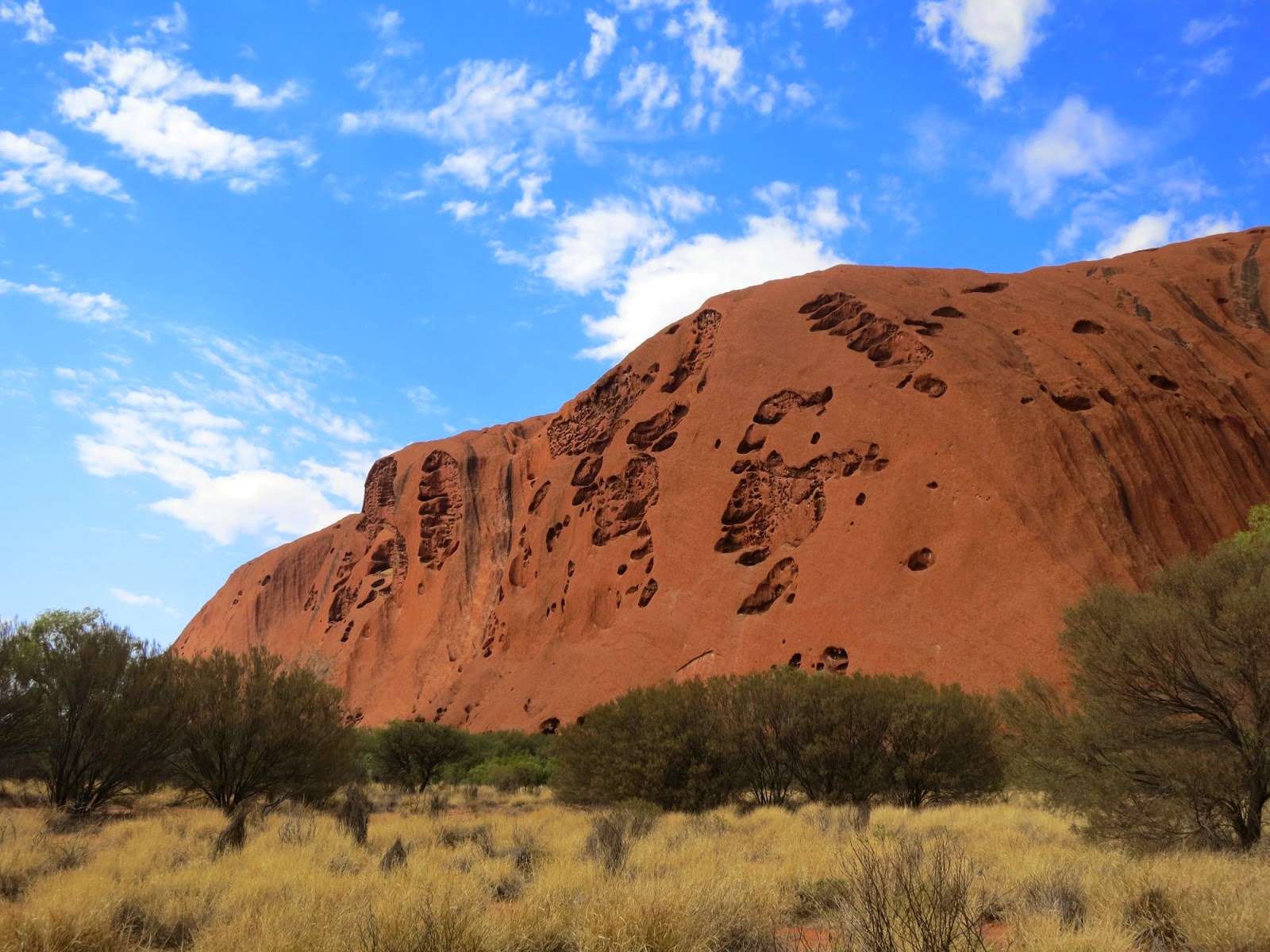The BIG one - Uluru.
Yes, it's B.I.G and it is really really good. Totally worth seeing.
We drove for ever it seemed, it really is in the middle of nowhere.
Except that there is a whole national park out there - Uluru-Kata Tjuta National park and the other part, Kata Tjutu which used to be called the Olgas should not be overlooked.
It is quite exciting on the drive in when you get your first glimpse of what is really an aussie icon.
There are many things you can do there apart from climb.
1. Walk around. It is a 12 km loop.
2. cycle around. We had our own bikes but you can hire bikes from the visitors centre and many walking people we passed asked if they could swap!
3. See it at sunset and sunset. There are parking lots set aside for sunset and sunrise viewing. The thing to do is to get to the sunset place early at least an hour before, takes chairs and snacks (it is about happy hour after all!)
You get a good spot to observe all the wonderful colour changes that happen as the sun lowers in the sky. The rock changes from brown, to tan to vibrant orange. That's what it's all about.
4. You get a fairly good view of the rock from pretty much any sandhill but the sandhills are quite fragile so they try and keep all the activity to certain ones. There is a good one at the campground with a boardwalk from the main camping area. It is particularly nice at sunrise.
5. Go to the cultural centre and get a load of the cultural implications of the area.
6. Go on a camel ride.
7. Go on a free ranger guided walk.
8. Indulge in a bit of retail therapy or browsing. There are one or two (or more) artists in residence who you can watch at work and have a chat to.
There are also several nice gift shops and outlets for local indiginous artists.
9. Look at the stars. The night sky is spectacular. There is also an astronomer in residence who does evening tours of the sky. When we were there it was Petroff who used to work with GC.
10. Go to Kata Tjuta.
A lot of people say that Kata Tjuta was their favorite part and it is certainly a specatuclar clump of rocks.
The highest is actually quite a bit higher than Uluru and they are made of the most amazing conglomerate rock - made up of rocks the average size of footballs glues together with other rocky stuff.
There is a classic walk to the Valley of the Winds. And a circuit of about 7kms. Very nice. The first bit is very popular but we found not many people did the full circuit as was good way to get away from the crowds.
Zebra finches flock to the water station on the track -
Harriet made a rare trip with us and demonstrates how big the conglomerate rocks are!
Mr planet is dwarfed by the rocks at Kata Tjuta - see him?
Here he is!
The issue of climbing is a hot one!
The traditional owners do not want you to climb.
The national parks people don't want you to climb.
So why is it still allowed?
Some say that tourist numbers will drop and certainly we met some people who were desperate to climb. Unfortunately for them it was closed most of the time we were there due to high winds.
It also gets closed if it is too hot or for "cultural" reasons.
There is a book in the cultural centre that you can sign if you chose not to climb.
For us it didn't seem necessary to climb to appreciate the beauty of the area and we respect the wishes of the owners of the place, just as you would not ride your car round someone's front yard if they asked you not to!
It is quite dangerous in that a number of people have died over the years. And undoubtably some very unfit people attempt the climb. And there have been very many rescues as well.
But we love Uluru.
It is beautiful. From its well-known profile. To the detail you only see when you are close - the ridges running over it, the caves buried in it;s flanks, the greenery that somehow manages to cling to it. The secret waterholes, the marks made by the waterfalls which too rarely cascade down it.
The rock art stories.
The colour of the rock.
The changing colours of the rock.
I could go on and on....and if you've been there, you'll k now what I'm going on about.
And if you haven't been....then put it on your bucket list.






















































